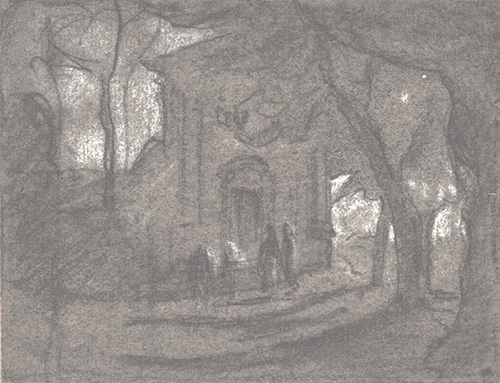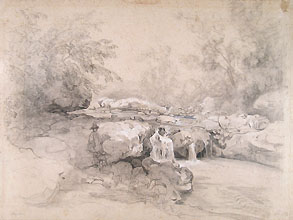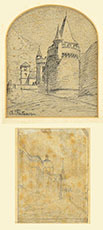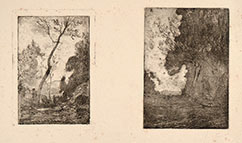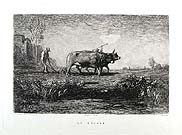(Reggio Emilia 1818 - Turin 1882)
LANDSCAPE
Black chalk, heightened with white on brownish paper.
112 x 145 mm.
LITERATURE: Exhibited in Milan, Galleria Vinciana, 1945, and published in the catalogue Esposizione di 40 Disegni Significativi dell'Ottocento, Presentati da Enrico Somarè.
PROVENANCE: Igino Cerastico (1928-1979).
Fontanesi studied at the Scuola di Belle Arti in Reggio Emilia. Between 1841 and 1846 he made the sets for the city theatre and began painting landscapes. In 1850 he moved to Geneva, working within the sphere of Alexandre Calame, Corot and Daubigny. Here he set up a studio and displayed his work at the main exhibitions. His main area of interest was landscape painting, which he expanded on after visiting the Universal Exhibition in Paris in 1855. This trip marked the beginning of a period characterized by important exhibitions and by prestigious appointments, such as his nomination as director and professor of illustration at the Academy of Lucca, but above all his chair as a landscape professor in Turin.
In 1876, the Technical Fine Arts School, an art school of painting and sculpture, was founded in Tokyo. It was the first governmental art school founded in Japan. The Meiji government contracted three Italian artists as foreign advisors: Vincenzo Ragusa for sculpture, Antonio Fontanesi for drawing and Giovanni Cappelletti for the preparatory course. The trio greatly influenced the development of Japanese art through the next several decades. Fontanesi introduced the techniques of charcoal, crayon and oil paints to his Japanese students. He also taught western concepts of perspective, anatomy and sketching from life. His career in Japan was cut short by serious illness, which forced him to return to Italy in 1878.
